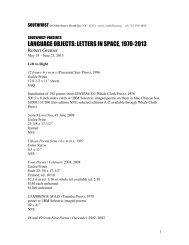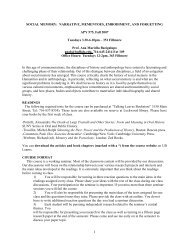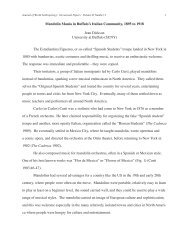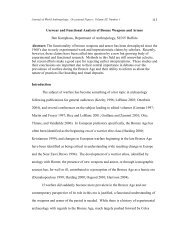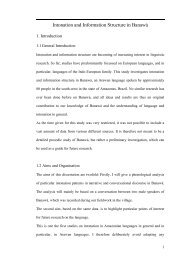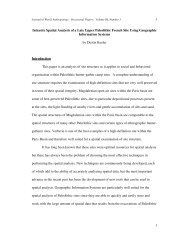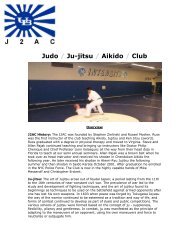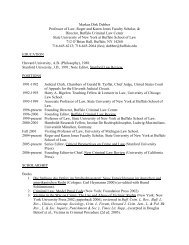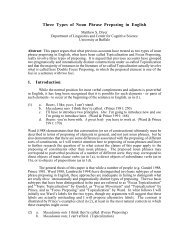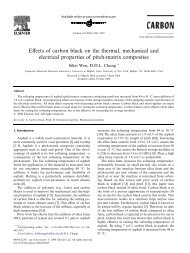Electrophysiological Evidence for Sentence Comprehension - Wings
Electrophysiological Evidence for Sentence Comprehension - Wings
Electrophysiological Evidence for Sentence Comprehension - Wings
Create successful ePaper yourself
Turn your PDF publications into a flip-book with our unique Google optimized e-Paper software.
Activity verbs, in contrast, refer to an action that is neither punctual, nor telic (e.g. walk,<br />
eat).<br />
These four classes capture the verbs that refer to spontaneous actions. To capture the<br />
meaning of the verbs that refer to the action that is induced, Van Valin & LaPolla (1997:<br />
97) introduce causative correlates of the four Aktionsarten. To account the fact that some<br />
verbs behave like activity verbs when they have a non-specific object or a mass noun as<br />
an object (e.g. beer, wine) and as accomplishment verbs when they have a quantified<br />
object (e.g. a glass of beer, a glass of wine), a new category, active accomplishment is<br />
introduced. Together with its causative counterpart, this makes the total of ten verbal<br />
classes. Each of these categories has a distinct logical structure as shown on Table 1.<br />
Table 1. Aktionsart types and their logical structures<br />
Verb class Logical structure<br />
State predicate’ (x) or (x, y)<br />
Activity do’ (x [predicate’ (x) or (x, y)])<br />
Achievement INGR predicate’ (x) or (x, y)<br />
INGR do’ (x [predicate’ (x) or (x, y)])<br />
Accomplishment BECOME predicate’ (x) or (x, y)<br />
BECOME do’ (x [predicate’ (x) or (x, y)])<br />
Active accomplishment do’ (x [predicate 1’ (x, (y))]) & BECOME predicate 2’<br />
(z, x) or (y)<br />
Causative α CAUSE β, where α and β are of any logical structure<br />
The syntax-to-semantics linking – what, in fact, sentence comprehension is made of – is<br />
based on the logical structure of the verb. The linking consists of defining relations<br />
between the arguments in the logical structure and thematic relations, in RRG generalized<br />
thematic relations called ‘macroroles’. There are two macroroles, ‘actor’ and ‘undergoer’<br />
44




